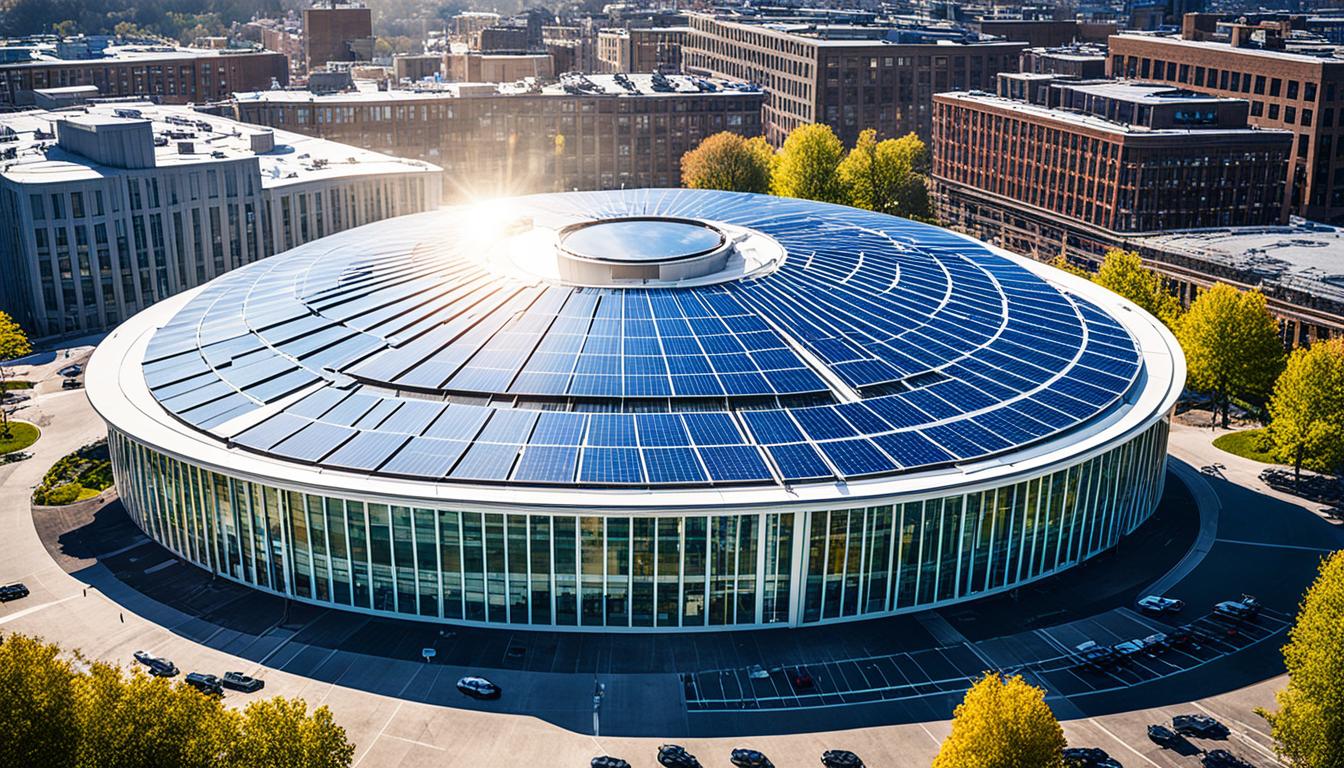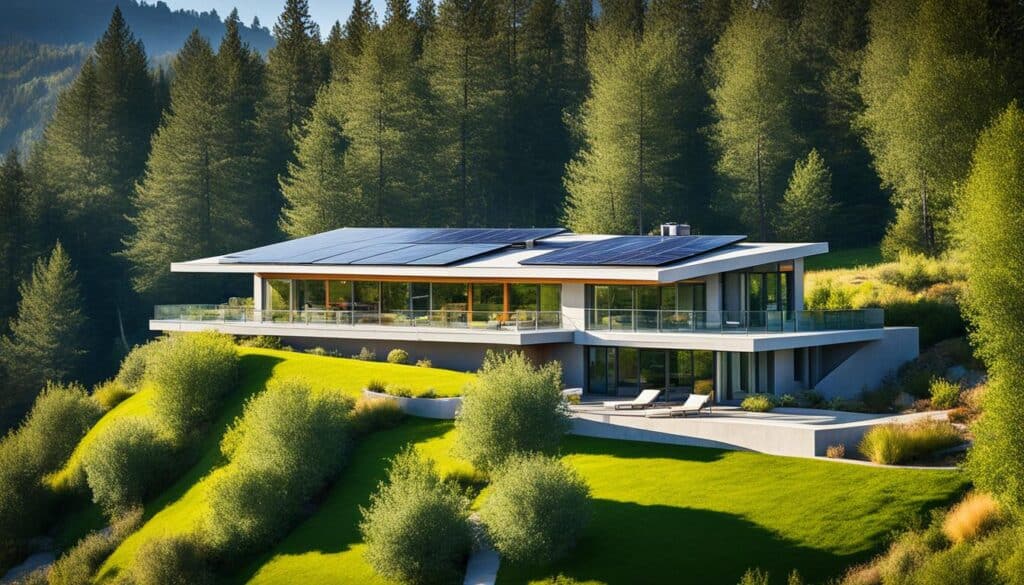
As we strive for a more sustainable future, harnessing solar energy has emerged as a crucial solution. One of the most promising methods is through passive solar energy systems. These systems offer a multitude of advantages that not only benefit our environment but also our wallets. By leveraging the natural heat and light from the sun, passive solar energy provides a cost-effective and eco-friendly alternative to traditional energy sources.
Passive solar energy systems excel in energy efficiency, reducing our reliance on fossil fuels, and improving indoor comfort. Through strategic design principles, such as proper insulation, optimized window placement, and the utilization of thermal mass, buildings can achieve optimal temperature control without excessive energy consumption. This results in lower utility bills while minimizing our carbon footprint.
Implementing passive solar energy systems involves integrating specific design elements into buildings. These principles include maximizing solar exposure by optimizing building orientation, incorporating energy-efficient windows with insulation, utilizing thermal mass materials to store and release heat, and employing shading devices for solar gain control. By implementing these design principles, we can effectively harness solar energy and enjoy its benefits.
Key Takeaways:
- Passive solar energy systems leverage the natural heat and light from the sun for sustainable living.
- Advantages include increased energy efficiency, reduced reliance on traditional energy sources, and improved indoor comfort.
- Design principles in passive solar systems optimize solar exposure, insulation, thermal mass, and solar gain control.
- Implementing passive solar energy systems can lead to lower utility bills and a reduced carbon footprint.
- By harnessing solar energy, we contribute to a more sustainable future for generations to come.
Advantages of Passive Solar Energy
Passive solar energy systems offer a multitude of benefits, ranging from energy efficiency to improved indoor comfort. By harnessing the power of the sun, these systems reduce reliance on traditional energy sources and lower utility bills. Let’s delve into the advantages of passive solar energy:
-
Energy Efficiency
Passive solar energy systems are specifically designed to maximize the capture and utilization of solar energy. This leads to reduced energy consumption and lower utility bills. The implementation of passive solar design principles is key, including proper insulation, strategic placement of windows, and utilization of thermal mass materials. These elements work harmoniously to ensure that buildings can maintain comfortable temperatures using minimal additional energy.
-
Reduced Reliance on Traditional Energy Sources
By utilizing passive solar energy systems, individuals and organizations can reduce their dependence on traditional energy sources, such as fossil fuels. This not only helps to conserve finite resources but also contributes to a more sustainable and environmentally friendly future.
-
Improved Indoor Comfort
Passive solar energy systems optimize the thermal comfort within buildings. The strategic placement of windows allows for the regulation of natural light and heat, enhancing the overall indoor environment. With passive solar design principles in place, occupants can enjoy a comfortable living or working space throughout the year.
-
Lower Utility Bills
One of the significant advantages of passive solar energy is its cost-effectiveness. By reducing energy consumption, these systems can result in lower utility bills for homeowners and businesses. The savings accumulated over time make passive solar energy an economically favorable choice for those seeking sustainable solutions.

Implementing Passive Solar Energy Systems
Implementing passive solar energy systems involves incorporating specific design elements into buildings. One of the key aspects is optimizing the building orientation to maximize solar exposure. By positioning the building in such a way that it receives the most sunlight throughout the day, passive solar design principles can significantly enhance the energy efficiency of the structure.
Another crucial element is the utilization of energy-efficient windows with proper insulation. These windows are specifically designed to minimize heat loss during colder months and reduce heat gain during warmer months, ensuring optimal thermal performance. With improved insulation, passive solar buildings can maintain comfortable temperatures using less additional energy.
Integrating thermal mass materials is also essential in passive solar design. These materials have the ability to absorb and store heat during the day and release it at night, ensuring a more consistent and regulated indoor temperature. This not only reduces the reliance on other heating or cooling systems but also enhances the overall comfort of the occupants.
To control the amount of solar gain entering the building, shading devices such as overhangs, awnings, or strategically placed vegetation are utilized. These devices help to prevent excessive heat buildup during summer months while still allowing for sufficient natural light penetration. By balancing solar gain and daylighting, passive solar energy systems provide a sustainable and efficient solution for harnessing the power of the sun.
FAQ
What are the advantages of passive solar energy?
Passive solar energy offers increased energy efficiency, reduced reliance on traditional energy sources, and improved indoor comfort. It also helps lower utility bills.
How does passive solar design contribute to energy efficiency?
Passive solar design principles, such as proper insulation, strategic placement of windows, and the use of thermal mass, help reduce energy consumption by maximizing the capture and utilization of solar energy. This results in lower utility bills.
What are the key elements of passive solar design principles?
The key elements include optimizing building orientation to maximize solar exposure, using energy-efficient windows with proper insulation, integrating thermal mass materials to store and release heat, and employing shading devices to control solar gain.
How does passive solar energy help in reducing reliance on traditional energy sources?
By utilizing the natural heat and light from the sun, passive solar energy systems reduce the need for traditional energy sources like electricity and fossil fuels. This helps reduce the overall carbon footprint and dependence on finite resources.
Does passive solar energy provide improved indoor comfort?
Yes, passive solar energy systems help maintain comfortable temperatures inside buildings by utilizing solar energy efficiently. The design principles ensure that buildings stay warm in winter and cool in summer, providing improved indoor comfort compared to traditional heating and cooling systems.
Can passive solar energy systems help in lowering utility bills?
Absolutely! By reducing energy consumption and utilizing the sun’s energy, passive solar energy systems significantly lower utility bills. These systems are designed to maximize energy efficiency, resulting in cost savings over the long term.






